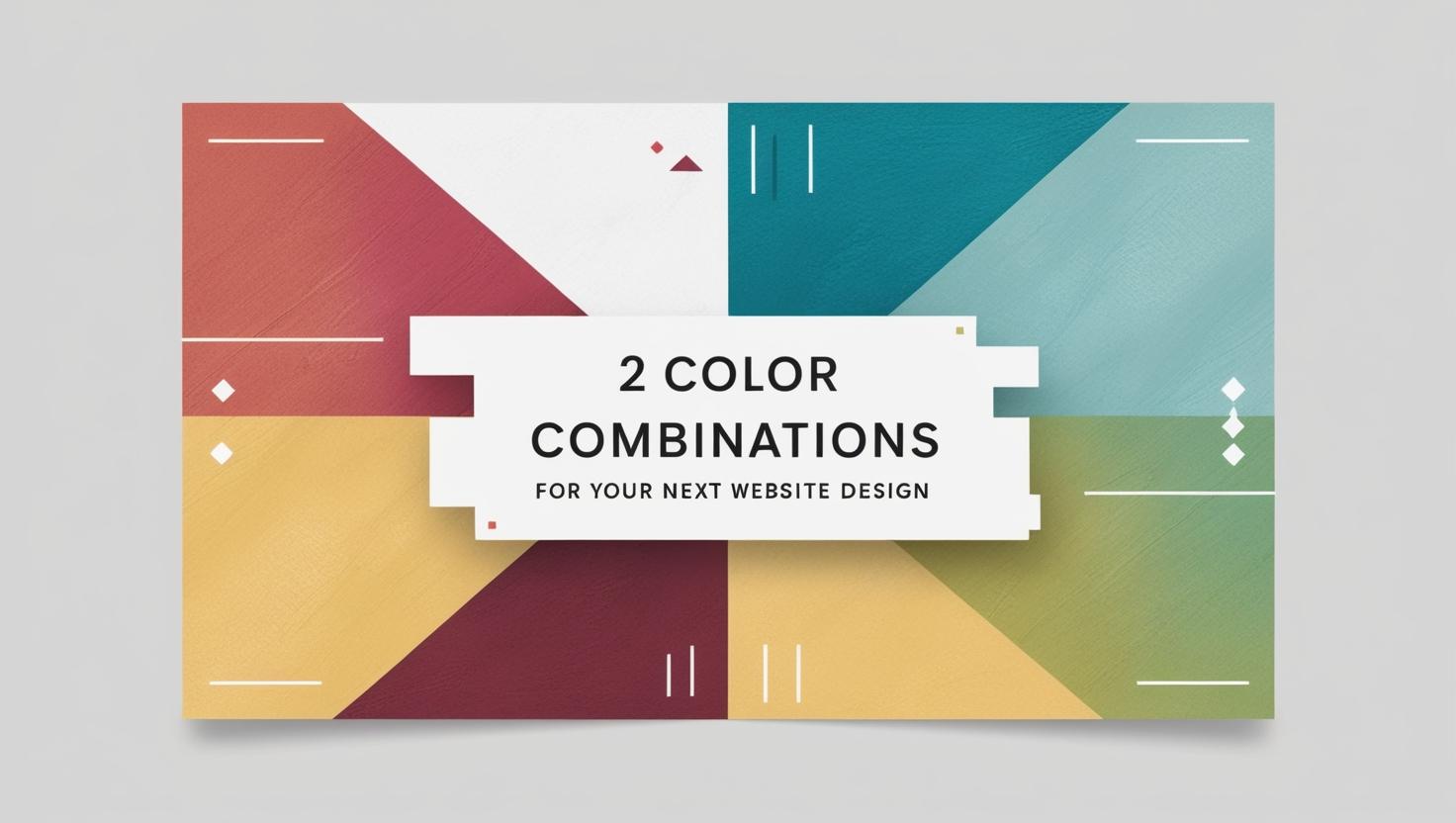Creating an attractive and functional website isn’t just about sleek layouts or engaging content color plays a massive role in captivating your audience.
When it comes to designing a website, 2 color combinations can strike the perfect balance between simplicity and visual appeal.
This guide walks you through the best strategies and combinations for your website.
- The Role of Colors in User Experience
- Primary, Secondary, and Complementary Colors
- The Psychology Behind Popular Colors
- Benefits of Using 2 Color Schemes
- Top 2 Color Combinations for Website Design
- Tips for Choosing the Right Color Combination
- Common Mistakes to Avoid in Color Pairing
- Tools to Help You Choose Color Combinations
- Adobe Color
- Coolors
- Conclusion
- FAQs
Understanding the Basics of Color Theory
The Role of Colors in User Experience
Color is more than decoration—it influences emotions, decision-making, and usability. For example, cool tones like blue can calm users, while warmer shades like red can create urgency. Pairing the right colors enhances user experience and drives desired actions.
- Emotional Impact of Colors: Colors evoke feelings and set the tone of your website. For instance, yellow inspires optimism, while black conveys authority.
- How Colors Affect Usability: High contrast between text and background ensures readability, while cohesive schemes make navigation effortless.
Primary, Secondary, and Complementary Colors
Understanding how colors interact is crucial for creating balance. Complementary colors, located opposite on the color wheel, provide a striking contrast, while analogous colors create harmony.
- The 60-30-10 Rule: Use 60% of a dominant color, 30% of a secondary one, and 10% as an accent. This timeless rule ensures a polished look.
The Psychology Behind Popular Colors
Common Associations of Popular Colors
- Blue: Trust, professionalism, and stability. Great for corporate websites.
- Red: Excitement and urgency, often used for call-to-actions.
- Green: Growth and harmony, ideal for eco-friendly brands.
Cultural Influences on Color Choices
Different cultures associate colors with various meanings. For instance, red symbolizes luck in China but represents warning in Western countries.
Benefits of Using 2 Color Schemes
Simplifies the Design Process
Using just two colors reduces complexity, helping you focus on delivering a consistent design.
Enhances Brand Identity
A focused color palette makes your brand more recognizable, reinforcing its message.
Improves Readability and User Experience
With a clean and organized appearance, 2-color designs prevent visual clutter.
Top 2 Color Combinations for Website Design
Blue and White
A timeless pairing that exudes professionalism and clarity. Ideal for corporate or health-related websites.
Black and Yellow
This high-contrast combination grabs attention and radiates energy. Great for creative or e-commerce platforms.
Red and White
A vibrant yet clean mix that communicates energy and urgency. Perfect for promotional websites.
Navy and Gold
Elegant and luxurious, this pairing suits premium brands and sophisticated websites.
Green and Beige
Natural and earthy, this combination resonates with eco-conscious businesses.
Purple and Grey
Balanced yet imaginative, this mix works well for creative industries.
Pink and White
Soft and welcoming, perfect for lifestyle or personal blogs.
Orange and Black
Dynamic and edgy, ideal for tech or sports-related websites.
Tips for Choosing the Right Color Combination
Align with Your Brand’s Personality
Your colors should reflect what your brand stands for. A tech startup might lean towards cool, futuristic hues like blue and grey.
Consider Your Target Audience
Colors appeal differently to various demographics. For instance, bright colors might resonate with younger audiences.
Test the Combination Across Different Devices
Ensure your colors look consistent on desktops, tablets, and smartphones.
Common Mistakes to Avoid in Color Pairing
Overwhelming Users with Too Many Colors
Stick to your chosen two colors to maintain a cohesive design.
Ignoring Contrast and Readability
Make sure your text is easy to read against the background.
Neglecting Accessibility Standards
Ensure your color choices meet accessibility guidelines, including sufficient contrast ratios.
Tools to Help You Choose Color Combinations
Adobe Color
Adobe Color a versatile tool for creating custom palettes.
Coolors
Coolors is perfect for generating stunning combinations quickly.
Canva Color Palette Generator
Canva is a user-friendly platform for inspiration and design.
Conclusion
Choosing the right 2 color combination is a game-changer for your website’s aesthetics and functionality. Experiment with the ideas shared here, and don’t be afraid to get creative. Remember, the right colors not only look good but also enhance the user experience.
FAQs
- What are the best 2 color combinations for minimalist websites?
Blue and white or black and white work well for minimalist designs. - How do I ensure my color combinations are accessible?
Use tools like WCAG contrast checkers to meet accessibility standards. - Can I change my website’s colors later?
Yes, but ensure the changes align with your brand identity. - Should I use trendy colors or stick to timeless options?
Timeless options are safer, but trends can work if they align with your brand. - How do I test color combinations effectively?
Preview them across devices and gather user feedback.
